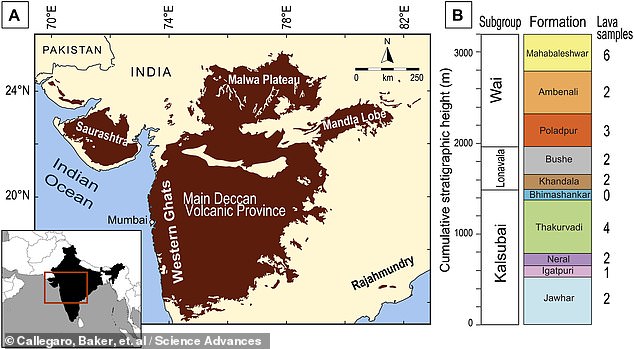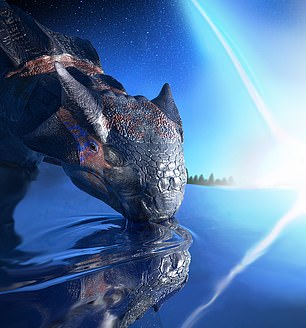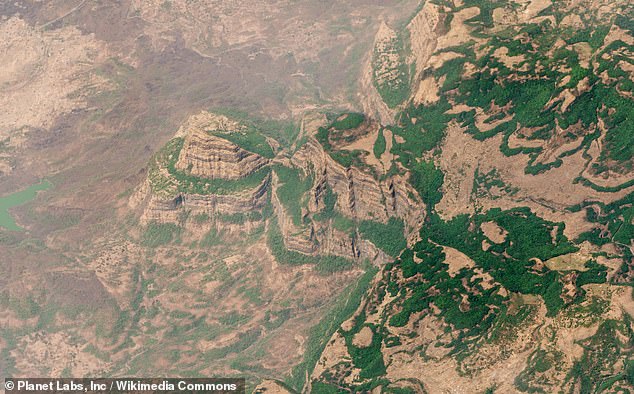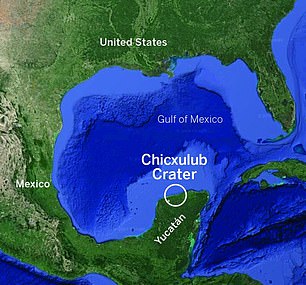Asteroid or supervolcano? New study says dinosaurs were wiped out by BOTH
>
Recurring “volcanic winters” may have left the dinosaurs hungry, shivering, and vulnerable to a fatal “final strike” from the asteroid that eventually wiped them out.
At least, an international team of researchers from Italy, Norway, Canada and the United States reached this conclusion in a new study, which analyzed sulfur and fluorine gases trapped in ancient volcanic rocks from the notorious giant Deccan Traps volcano.
Their new study finds that this sulfur and fluorine — spewed out by Deccan traps more than 200,000 years before the extinction-level event — would have lowered global temperatures by up to 18 degrees Fahrenheit (10 degrees Celsius).
The findings add further clarity to the heated debate among paleontologists and other scientists about what really caused the extinction of dinosaurs.
Their work is consistent with a theory of compromise: the “pressure-pulse extinction model.”
Recurring “volcanic winters” may have left dinosaurs hungry, shivering and vulnerable to a fatal “final blow” from the asteroid that ultimately wiped them out, a new study reveals.

An international team of researchers from Italy, Norway, Canada and the United States analyzed sulfur and fluorine gases trapped in layers of ancient volcanic rock (shown above right) from the Deccan Traps supervolcano in India. It is likely that volcanic gases led to lower temperatures globally
“Our research shows that climate conditions were almost certainly unstable, with frequent volcanic winters that could have lasted decades, before the extinction of the dinosaurs,” said study co-author and geologist Don Baker.
“Our work helps explain this major extinction event that led to the emergence of mammals and the evolution of our species,” said Baker, who teaches at Canada's McGill University in Montreal.
The team analyzed sulfur and fluorine compounds trapped in samples taken from a “lava pile” in the Deccan Traps in India's Western Ghats mountain range, near Bombay.
Exact concentrations of the compounds, measured in parts per million, were determined by X-ray fluorescence spectrometry of synchrotron radiation, which bombards samples with magnetized bolts of radiation and then records how that radiation bounces back and scatters back.

Some “volcanic winters,” according to study co-author, geologist Don Baker, “could have lasted decades” each, before the meteorite led to the extinction of the dinosaurs.
Becker drew a cooking analogy to explain the process of calculating the volume of sulfur and fluorine in the atmosphere from the small proportions found within lava rocks.
“Imagine making pasta at home. “You boil water, add salt and then pasta,” Baker began in a statement.
“Some of the salt from the water gets into the pasta, but not a lot of it,” he said.
Becker and his team worked with similar known ratios to estimate the amount of sulfur and fluorine gas compounds that flooded Earth's atmosphere during the Cretaceous period.
A steady drop in temperature occurred during the Late Cretaceous, as estimated by previous paleoclimate studies, with higher concentrations of sulfur compounds in several layers of ancient lava from the Deccan Traps: layers known as the Thakurvadi through the Bush rock formations.
The sulfur content was found to be up to 1800 ppm in these layers.
Through the researchers' calculations, this indicates that a volume of sulfur gas ranging between 86,000 and 466,000 cubic kilometers exploded into the atmosphere in prehistoric times.
When it comes to fluorine gases, Becker and his colleagues don't think it has contributed to significant climate change, but its concentrations have other, more localized, toxic effects.
“There is historical evidence of local effects of fluorine gas discharge,” they wrote in their study published in the journal. Advancement of science“It also precipitates easily from volcanic fog.”

Above, a November 2023 eruption from one of the most active and tallest volcanoes in Europe, the snow-capped Etna volcano in Italy. Etna shows what global “volcanic winters” looked like

Huge areas of western India were carved and grooved by lava flows from the massive Deccan Traps volcano more than 66 million years ago. Above, a SkySat satellite image of the Deccan Traps taken in March 2018 over the state of Maharashtra in India.


The “final blow” in the researchers' view was almost certainly the famous Chicxulub impact, when a carbon-rich asteroid slammed into Mexico's Yucatan Peninsula about 66 million years ago. The impact resulted in trillions of metric tons of dust clouds and a new ice age
These local impacts included “acid rain, crop failure, and livestock poisoning” after the eruption of the Lakki volcano in Iceland in 1783 and 1784.
In essence, the researchers speculate that the fluorine ring at Lakki Volcano may be a good example of how the massive volcanic activity of the Deccan Traps could have done more damage to dinosaurs more than 66 million years ago.
“Volcanoes in the Deccan Traps set the stage for a global biotic crisis,” the team said in their new study, “repeatedly deteriorating environmental conditions by forcing frequent short volcanic winters.”
But the “final blow” in their view was almost certainly the famous Chicxulub impact, when a carbon-rich asteroid slammed into Mexico's Yucatan Peninsula about 66 million years ago.
The impact, which left a six-mile-wide crater visible to this day, destroyed the planet, shattering a hot cloud of dust, ash and steam and sending 25 trillion metric tons of material into the atmosphere, some of it even escaping Earth's orbit. .
Scientists say the heat flowing from the rest of that material caused forest fires in 70% of the planet and left huge dust clouds that precipitated a new ice age.
But dinosaurs were already experiencing bad weather at the time, based on new work by Baker and his team.
“Our data set suggests that climate perturbations caused by volcanoes were already underway,” they wrote.
(Tags for translation)dailymail
